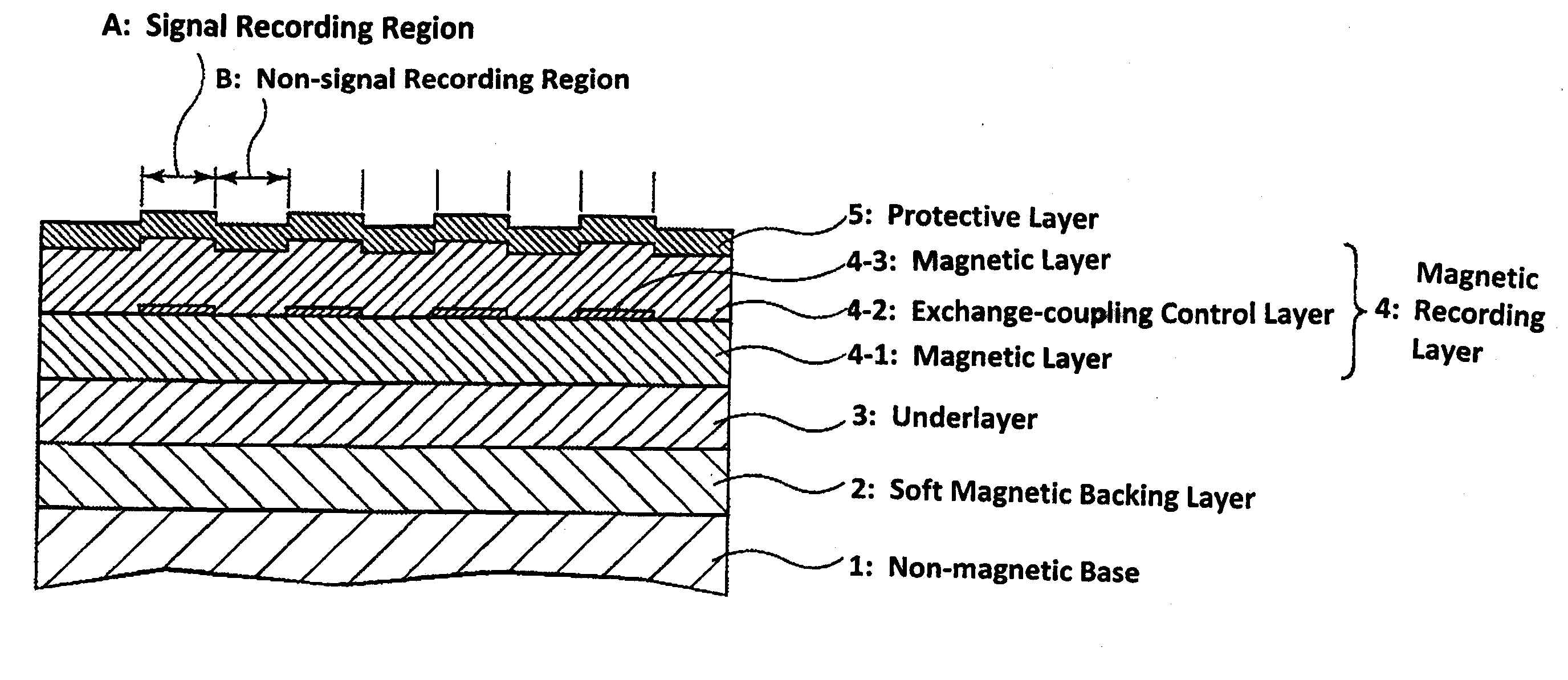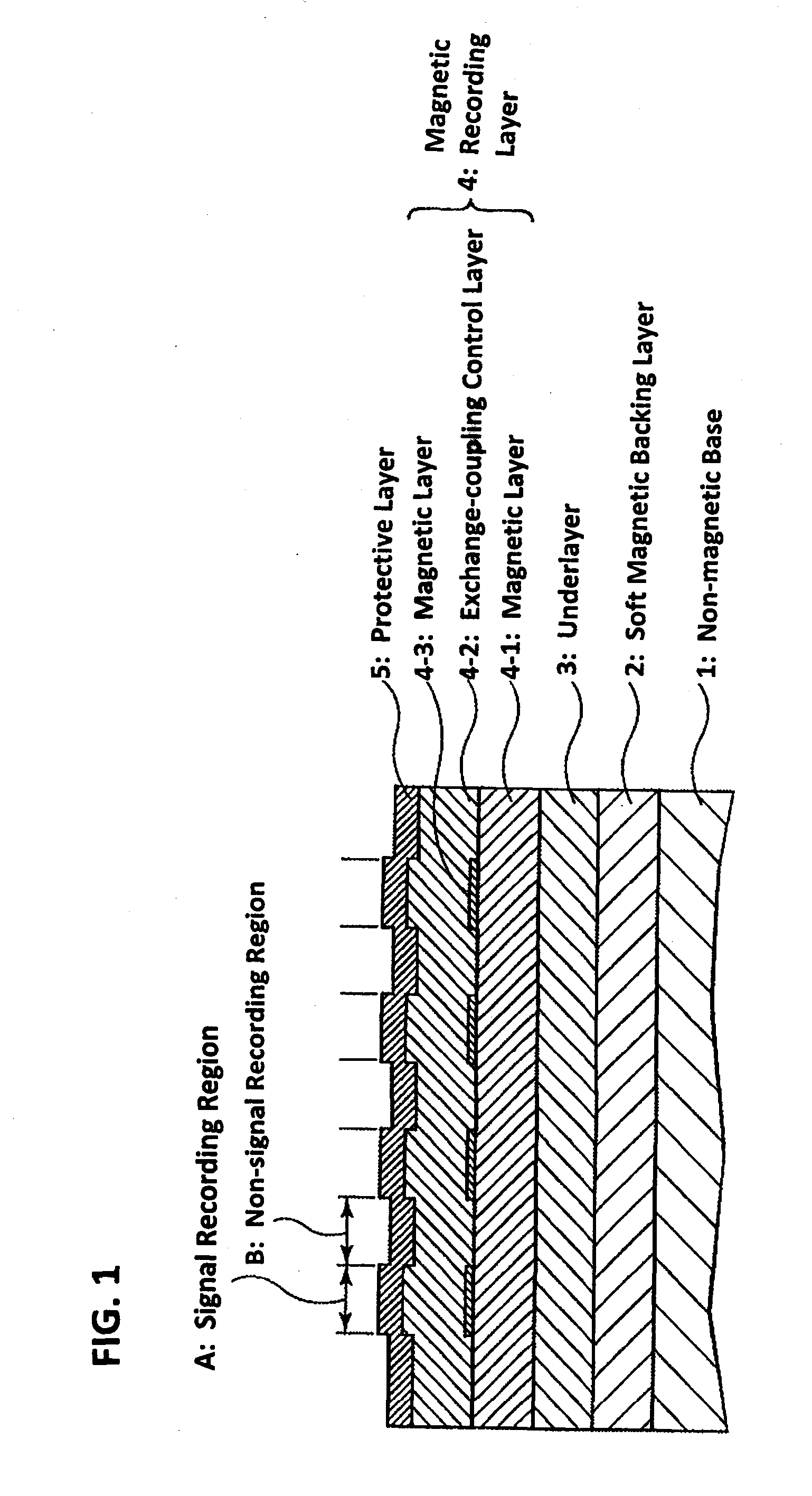Magnetic recording medium and method of manufacturing same
a technology of magnetic recording medium and manufacturing method, which is applied in the field of magnetic recording medium, can solve the problems of difficult stably maintaining perpendicular magnetization, signal overwriting, and prominent appearance of “adjacent track erasure”, and achieve satisfactory surface properties, reduce track edge noise, and improve the effect of magnetic recording quality
- Summary
- Abstract
- Description
- Claims
- Application Information
AI Technical Summary
Benefits of technology
Problems solved by technology
Method used
Image
Examples
example 1
PRACTICAL EXAMPLE 1
[0049]As the nonmagnetic base 1, a disc-shape glass substrate with a flat surface was used; after cleaning, the substrate was placed in a sputtering chamber, and a Co88Nb7Zr5 target was used to form a CoNbZr film 80 nm thick at an Ar gas pressure of 5 mTorr, to form the CoNbZr soft magnetic backing layer 2.
[0050]Next, a Ru target was used to deposit a Ru underlayer 3 of thickness 20 nm by sputtering at an Ar gas pressure of 30 mTorr. Then, a (CO70Pt20Cr10)94(SiO2)6 target was used to form a CoPtCr—SiO2 layer (magnetic layer 4-1) to a thickness of 8 nm at an Ar gas pressure of 60 mTorr. Then, a mask pattern disc, in which a mask pattern was formed, was placed between substrate and sputtering target, and a Ru target was used at an Ar gas pressure of 30 mTorr to form a Ru layer to 0.25 nm as the exchange-coupling control layer 4-2 only in regions which were to serve as signal recording regions A.
[0051]Next, a CO71Cr20Pt5B4 target was used to form a CoCrPtB layer (mag...
PUM
| Property | Measurement | Unit |
|---|---|---|
| thickness | aaaaa | aaaaa |
| thickness | aaaaa | aaaaa |
| thickness | aaaaa | aaaaa |
Abstract
Description
Claims
Application Information
 Login to View More
Login to View More - R&D
- Intellectual Property
- Life Sciences
- Materials
- Tech Scout
- Unparalleled Data Quality
- Higher Quality Content
- 60% Fewer Hallucinations
Browse by: Latest US Patents, China's latest patents, Technical Efficacy Thesaurus, Application Domain, Technology Topic, Popular Technical Reports.
© 2025 PatSnap. All rights reserved.Legal|Privacy policy|Modern Slavery Act Transparency Statement|Sitemap|About US| Contact US: help@patsnap.com



